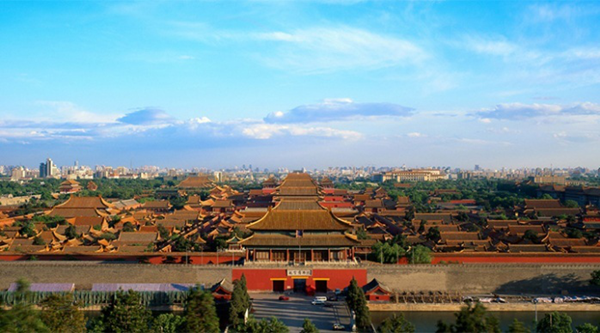The Palace Museum


Image from the official website of the Palace Museum
Perhaps the most popular tourist destination of Beijing, the Palace Museum receives tens of millions of visitors a year. Established in 1925, it is installed in the former imperial palace of the Ming (1368-1644) and Qing (1644-1911) dynasties – popularly known as the Forbidden City. In 1987 it was listed as a UNESCO World Heritage site.
History
Seated in the center of Beijing, it covers a considerably large area of 1,120,000 square meters, and consists of numerous architecturally significant buildings dating back to as early as the 15th century. It has been home to twenty-four Chinese emperors: twelve of the Ming and ten of the Qing dynasties, and witnessed many historic moments in Chinese history, including the announcement of the abdication of the last emperor Puyi (r. 1909-1911) and the surrender of the Japanese invasion army of World War II.
Collection
The Palace Museum houses 1.8 million pieces (sets) of artworks and artifacts that embody the splendors of Chinese traditional culture, the bulk of which are legacies of the Qing imperial household collection. They reflect the imperial taste of art in every aspect of life. Ever since the founding of the museum, a number of halls or other interior spaces have been converted into galleries displaying the imperial collections, while others are well preserved to maintain their interior decor from the late imperial times. The collection covers a wide range of forms, including painting, calligraphy, ceramics, sculpture, textiles, rare books, historical archives, jade carvings, and decorative crafts of various materials from pre-historic times to the 19th century. Permanent exhibitions featuring bronzes, ceramics, architecture, and archive of the Qing dynasty Council of State are available all year; while exhibitions of paintings and calligraphic works are basically mounted in Spring and Summer due to strict requirements for proper temperature and humidity to protect the fragile media. The northern and southern sections of the palace wall are accessible; a walk on top of the ten-meter high wall can be the best way to start or end a tour of the Museum as one can enjoy the panoramic view of the entire Forbidden City.
The Palace Museum has historical connections with the Taipei "National" Palace Museum. At the end of the civil war (1945-1949), with the imminent victory of the Communist army south of the Yangtze River, the Kuomintang began their retreat to Taiwan. From the end of 1948 to 1949, the Kuomintang selected 2,972 crates from the 13,427 crates and sixty-four bundles of the collection, which had been packed for evacuation from the threatening warfare in north China, to be shipped across the Strait for storage in Taichung. The contents of these crates formed the collection of the Taipei Palace Museum, which opened to the public in 1965.
Address: No 4 JingshanQianjie, Dongcheng District, Beijing
Open Hours: 8:30 - 17:00 (1 April - 31 October, entry until 16:10),
8:30 - 16:30 (1 November - 31 March, entry until 15:40)
Closed days: Closed on Mondays (except on national holidays)
Email: gugong@dpm.org.cn
Admission: 60 yuan (1 April - 31 October),
40 yuan (1 November - 31 March)







